#Diane d'Orléans
Text

Diane, Dowager Duchess of Württemberg (née Princess Diane of Orléans; born 24 March 1940) is a French-German painter, sculptor, writer and philanthropist. She is the widow of Carl, Duke of Württemberg, head of the House of Württemberg. She is the fourth daughter and sixth child of Henri, Count of Paris, Orléanist pretender to the throne of France, and his wife, Princess Isabelle of Orléans-Braganza.
#Diane d'Orléans#Diane von Württemberg#House Orléans#xx century#people#portrait#photo#photography#black and white
0 notes
Text
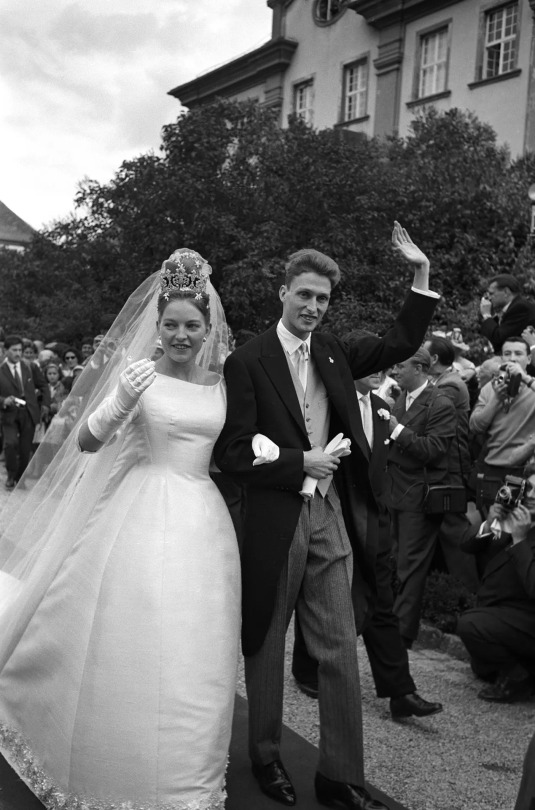
Princess Diane d'Orléans, Duchess of Württemberg || Dior
8 notes
·
View notes
Text
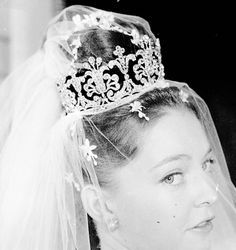
✵ July 18, 1960 ✵
Princess Diane d'Orléans & Carl, Duke of Württemberg
#royal wedding#german royalty#german royal family#german royal wedding#lace wedding veil#royal wedding veil#wedding tiara#wurttemburg#french royal wedding#french royal family#french royalty
12 notes
·
View notes
Text
Anne de Beaujeu
Anne de Beaujeu (Anne de France, 1461-1522)
Unofficial regent of France and duchess of Bourbon

Anne de Beaujeu provides an example of female political authority in a country where the Salic Law prevented women from assuming the crown. She also illustrates the tension between an increasingly centralized monarchy on the one hand and feudal independence on the other, having supported both causes at different times in her life. Probably born in 1461, Anne de Beaujeu was the oldest of the surviving children of Louis XI, king of France, and the one said to resemble him most intellectually and temperamentally. When this king died in 1483 leaving a thirteen-year-old Charles VIII on the throne, Anne and her husband, Pierre de Beaujeu, as his guardians, assumed control. In so doing, they resisted Louis d'Orléans, the next in line to the throne, who wished to be named regent. Louis and his supporters sought help from the estates-general who met in 1484 but who ultimately supported Anne's cause. Referred to as Madame la Grande (Grand Madam), Anne was recognized by the court and by foreign emissaries as the person actually ruling France during the early years of Charles's reign.
In 1488 she and Charles VIII squelched a noble uprising, the Guerre Folle (the Foolish War) led by Louis d'Orléans and Francis II duke of Brittany. Charles then married the new duchess of Brittany, Anne, to ensure the duchy's loyalty to France. Meanwhile Pierre de Beaujeu's two older brothers had died, leaving Pierre with the Bourbon inheritance. Anne and her husband were now the richest and most powerful nobles in France. In 1491, after the loss of one infant and fifteen years of childlessness, Anne gave birth to a daughter, Suzanne. As Charles VIII grew increasingly independent of his older sister, Anne redirected her attention to her own lands and feudal duties, though she remained his advisor while retaining her ties to the court. When Charles died suddenly in 1498 leaving no heirs, Louis d'Orléans became king of France. Neither his previous attacks on the crown nor his well-known personal vices inspired confidence in his subjects, so the support of Anne de Beaujeu and her husband were instrumental in a smooth accession to the throne. Anne agreed to overlook their antagonistic past and did not hinder the annulment Louis immediately requested from her physically disabled sister, Jeanne. In exchange, Louis XII waived the royal rights to the Bourbon inheritance in the case that Anne and Pierre did not have a male heir. Once all this had been established, the Bourbon's relationship with Louis XII and his new queen, Charles's widow Anne de Bretagne, became quite cordial. Anne de Beaujeu no longer held any direct influence, however, over the governance of the French state.
In 1504 or 1505, after the death of her husband and before she arranged a marriage for her daughter, Anne wrote Suzanne a book of lessons, Les Enseignements d'Anne de France, duchesse de Bourbonnois et d'Auvergne, à sa fille Susanne de Bourbon, modeled on the book that Louis IX had written for his daughter, the one her own father had written for Charles, and the writings of Christine de Pizan. Anne's version contains conventional advice on the appropriate behavior for noblewomen. During her unofficial regency, Anne had overseen the education of many young noblewomen at court, including Louise de Savoie, Marguerite d'Autriche, and Diane de Poitiers. The humble feminine figure that emerges from the Enseignements, however, seems at odds with their independent author. More easily recognizable are the anxieties about life as an older widow distant from court. The Enseignements ends with a tale about a noblewoman who bravely sacrifices her only child for the honor of her family and the interests of the king. Suzanne was, in fact, married shortly thereafter to a cousin to protect the integrity of the Bourbon inheritance.
In contrast to the moral of her tale, however, the interests of a noble family and those of the crown did not always overlap. Before she died, Anne witnessed the opposition of two adults whom she had raised from childhood: her son-in-law, the connétable de Bourbon, and Louise de Savoie, mother of Francis I, successor to Louis XII. Louise and her son, suspicious of the wealth and power of the connétable, the Bourbon heir, challenged his inheritance. After losing the domain that Anne had so carefully built up and defended during her lifetime, the connétable, perhaps with Anne's bitter approval, responded by betraying the French king Francis I- the other cause that Anne had defended so staunchly during her brother's reign. Anne died in 1522, before this ultimate betrayal.
Emily Thompson in Encyclopedia of Women in the Renaissance.
#xv#xvi#anne de france#anne de beaujeu#regents#duchesse de bourbon#louis xi#charles viii#pierre de beaujeu#louis xii#françois ii de bretagne#anne de bretagne#la guerre folle#suzanne de bourbon#sainte jeanne de france#louise de savoie#marguerite d'autriche#diane de poitiers#charles iii de bourbon#le connétable de bourbon#françois i#proof that anne approved of this ? i didn't find anything#the connétable's betrayal is a complex story#one can point fingers at françois i and louise de savoie too#emily thompson#encyclopedia of women in the renaissance
17 notes
·
View notes
Text
MARIE-LOUISE-ÉLISABETH OF ORLÉANS
(born 1695 - died 1719)
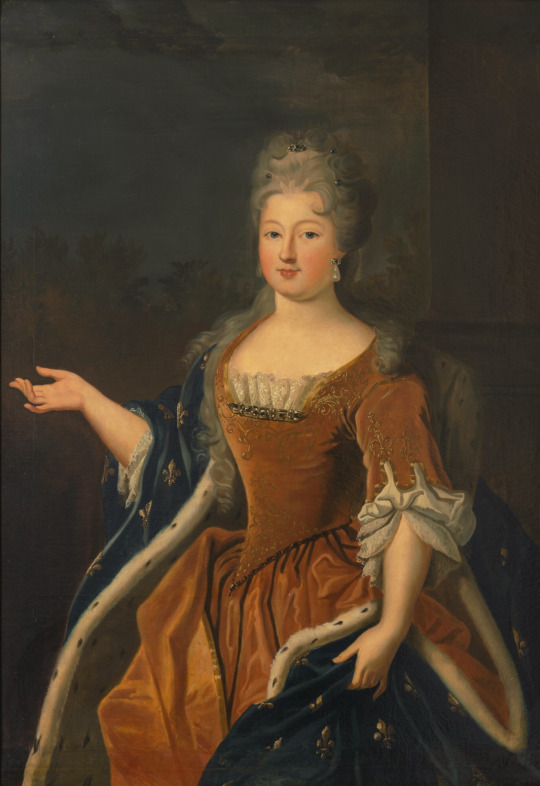
pictured above is a portrait of the Dowager Duchess of Berry, a copy by Auguste de Châtillon from 1838, after a portrait attributed to Pierre Gobert from the 18th century
-------------------- ~ -------------------- ~ --------------------
SERIES - On this day August Edition: Marie-Louise-Élisabeth was born on 20 August 1695.
-------------------- ~ -------------------- ~ --------------------
MARIE-LOUISE-ÉLISABETH was born on 20 August 1695, at the Palace of Versailles. She was the second child of Philippe II, Duke of Orléans and Françoise-Marie of Bourbon, Mademoiselle de Blois.
Having been born into the HOUSE OF ORLÉANS and as a legitimised maternal granddaughter of Louis XIV, King of France, she was a member of the French Royal Family.
As the eldest surviving daughter of the Duke of Orléans, from birth she was known as MADEMOISELLE D'ORLÉANS, having sometimes been called simply as Mademoiselle at the French Court.
When she was fourteen years old, in 1710, she was married to her cousin CHARLES, the Duke of Berry. He was the youngest son of Louis, (le Grand) Dauphin of France and Princess Maria Anna Victoria of Bavaria.
After her wedding she became the DUCHESS OF BERRY but was known at Court as MADAME DE BERRY.
Around the time of her wedding King Louis XIV also gave her husband the Duchies of Alençon and Angoulême, and the County of Ponthieu as apanages. So she also became the DUCHESS OF ALENÇON, the DUCHESS OF ANGOULÊME and the COUNTESS OF PONTHIEU.
During their four years of marriage she got pregnant three times, but none of the children survived. Her husband died in 1714, a month before she gave birth to the last children.
Her husband died aged only 27 and left her as an eighteen-year-old widow and she officially became the DOWAGER DUCHESS OF BERRY.
She received Luxembourg Palace as her Parisian residence, a place where she held many parties and receptions.
In 1715 her maternal grandfather the King Louis XIV and was succeeded by her cousin the infant King Louis XV, with her father as Regent.
At the time of her grandfather's death she was pregnant for the first time after becoming a widow, giving birth to a shortly living girl in 1716.
The people and the press often criticized her "promiscuous" life. Her contemporary the philosopher Voltaire (born François-Marie Arouet) even suggested an incestuous relationship between her and her father, the Regent. And, because of this he was imprisoned at the Bastille for 11 months.
It is said that by 1716 she married secretly to SICAIRE ANTONIN ARMAND AUGUSTE NICOLAS, the Count of Rions, and he may have been the father of her last two children. His parents were Amé Balise of Aydie, Count of Benauges and Thérèse Diane of Bautru Nogent.
As her second wedding was morganatic, she never took her husband's name and continued to be known at Court as Madame de Berry, until her own death.
Though she continued to host lavish parties and never hid any of her pregnancies. In 1717 she even received Pyotr I (the Great), Emperor of all the Russias while heavily pregnant.
All of her pregnancies made her fat and decresead her health, and she died three months after her last childbirth in 1719, aged only 23, at her home the Château de la Muette, outside Paris.
-------------------- ~ -------------------- ~ --------------------
MARIE-LOUISE-ÉLISABETH and her first husband CHARLES had three children...
Mademoiselle de Berry - died aged two days;
Charles, Duke of Alençon - died aged twenty days; and
Marie Louise Élisabeth of Alençon - died aged one day.
With her secretly second husband ARMAND AUGUSTE she may have had two children...
an unnamed daughter - a nun; and
a stillborn daughter.
And she also had illegitimate children...
With an unknown man...
an unnamed daughter - died aged three days.
#marie louise elisabeth d'orleans#duchess of berry#mademoiselle d'orleans#house of orleans#french royals#french royal family#royals#royalty#monarchy#monarchies#royal history#french history#european history#world history#history#history lover#17th century#18th century#regency#french court#versailles#louis xiv#louis xv#duke of orleans#history by laura
22 notes
·
View notes
Photo
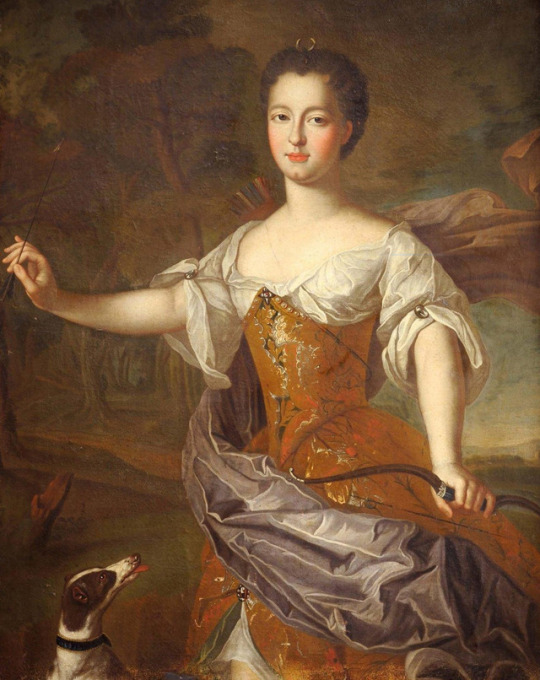
At the moment when I concluded my letter to the Princess of Wales, they came to announce to me that Madame d'Orléans was in labour. It was just eleven o'clock when my carriage was ready [at the Château de Saint-Cloud ], and at a quarter to one I entered the ante-chamber, and was told in a low voice : 'Her Royal Highness was safely brought to bed an hour ago.' But this was said in so sad a tone that I did not doubt that Madame d'Orléans had brought into the world a seventh daughter, and that unfortunately is what has happened.
Elizabeth Charlotte of the Palatinate, on the birth of her granddaughter, Louise Diane d'Orléans
#Louise Diane d'Orléans#louise diane d'orleans#house of orleans#Elizabeth Charlotte of the Palatinate#liselotte#long live the queue
165 notes
·
View notes
Photo



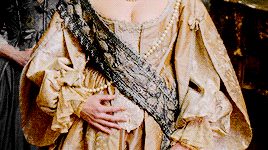
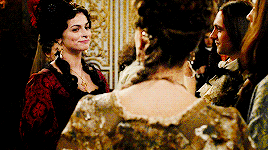

Generally overlooked, when she's not simply mistaken for two of her younger sisters, Gabrielle de Rochechouart de Mortemart, eldest child of Gabriel, then Marquis de Mortemart and Diane de Grandsaigne, was one of the most prominent figures of her time and perhaps the closest companion of Louis XIV alongside her brother, the Duc de Vivonne. She was first introduced at Court in 1651, and quickly became an important part of the private circle of the young King and his brother Philippe. Mademoiselle, Gaston d'Orléans' turbulent daughter, counted among her closest friends and described her as 'handsome, haughty and wild, brilliant too with the far-famed esprit des Mortemart'. Saint-Simon, who had known her during his childhood, recounted that "Madame de Thianges, the eldest sister, amused the King even more than the others, and had perhaps more influence over him [than Montespan]."
Married to the bland Claude Leonor de Damas de Thianges, Gabrielle profoundly disliked her husband's need for calm and quietness, and refused to follow him in his Burgundian estates. "After a son and two daughters had been born of this marriage, his wife left him to attach herself to the favor of her sister, and became as powerful and as much trusted as she was, without their affection for each other being diminished in the slightest degree," wrote Saint-Simon. Contemporary sources suggest that Thianges, Montespan and their brother Vivonne worked together for nearly thirty years to ensure the success and the triumph of their house, both sisters functioning as a two-headed mother for their children. Eventually, after the Affaire des Poisons that contributed to cast aside Montespan and their political faction led by Colbert, Thianges well and truly outranked her sister. Even though she already was a member of the King's inner circle since their late teens, she was then considered a member of the Royal Family, and was bestowed honors and privileges that even her nieces and nephews, legitimised children of the King, were not entitled to receive, such as the right to sit in the King's presence.
She was notably at war with Mme de Maintenon (’guelfi e ghibellini’, as Mme de Sévigné called them) and the Princesse Palatine, though she was greatly esteemed by Monsieur and Monseigneur, the Grand Dauphin, whose apartments in Versailles were adjacent to hers.
#historyedit#gabrielle de thianges#my queen#mine#*#the one character who deserved to be in a show like v*rsailles#but no let's create a fictional physician daughter no one cares about 🙃🙃🙃#even better let's make her the main character 🙃🙃🙃#i wanna cry but what else is new
280 notes
·
View notes
Photo
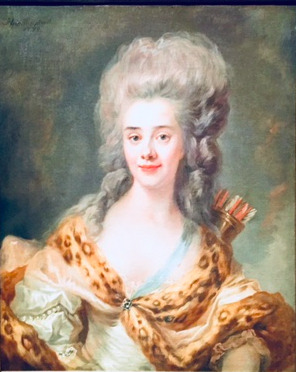
“Portrait de Madame La Rivière en Diane Chasseresse” de Johann Ernst Heinsius (1779) dans les collections permanentes du “Nouveau Parcours XVIIIe” au Musée des Beaux-Arts d'Orléans, novembre 2018.
1 note
·
View note
Photo

The apartment of Viscount Alexis de Noailles and princess Diane d'Orléans in the 16th Arr. of Paris, rue d'Andigné
0 notes
Photo
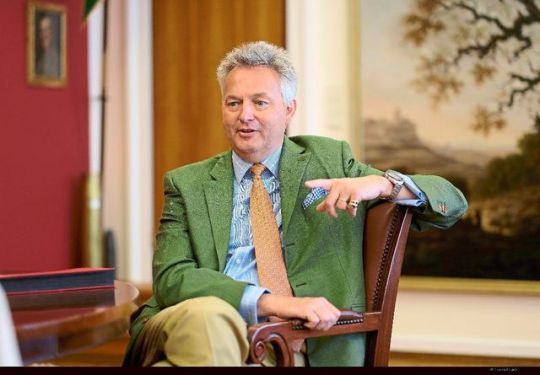
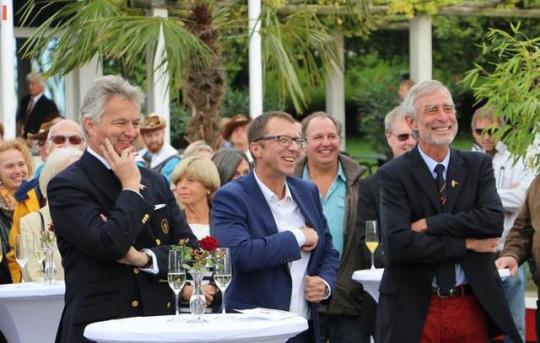


Friedrich Herzog von Württemberg (vollständiger Name Friedrich Philipp Carl Franz Maria Herzog von Württemberg; * 1. Juni 1961 auf Schloss Friedrichshafen in Friedrichshafen) ist ein deutscher Unternehmer, Oberst d.R. der Bundeswehr und Verwaltungschef des Familienunternehmens „Hofkammer des Hauses Württemberg.
Über 300 Mitglieder feiern das Hafen-Jubiläum - WYC: 300 Boote haben einen Liegeplatz
Freuen sich über die gute Stimmung und den großen Zuspruch beim Hafenjubiläum (vorne von links): S.K.H. Friedrich Herzog von Württemberg, 1. Bürgermeister Stefan Köhler und WYC-Ehrenpräsident Eckart Diesch.
Michael Hörrmann, Herzog Friedrich von Württemberg, Jörg Krauss, Andreas Falz und Edgar Schindler (von links) zerschneiden das rote Band zur Eröffnung der Rottenburger Grabkapelle, die vom Land mit 2.5 Mio.Euro gefördert wurde.
Friedrich ist der älteste Sohn von Carl Maria Herzog von Württemberg (* 1936) und seiner Ehefrau Diane Herzogin von Württemberg, geborene d'Orléans (* 1940), Tochter des Henri d’Orléans (1908–1999) und dessen Gattin Isabelle (1911–2003), geborene d’Orléans-Bragance.
Anfangs besuchte er eine Schule in Friedrichshafen. 1975 zog die Familie nach Altshausen um, von wo aus er ein Gymnasium in Saulgau besuchte. Nach der Schulzeit machte er eine Ausbildung zum Offizier bei der Bundeswehr. Er führt den Rang eines Oberst der Reserve.
Seit 1992 arbeitet Friedrich Herzog von Württemberg beim Familienunternehmen „Hofkammer des Hauses Württemberg“, seit 1997 ist er Chef der Verwaltung. In deren Verwaltung stehen ca. 5500 Hektar Wald, ca. 2000 Hektar Wiesen und Äcker, 50 Hektar Rebgärten, etwa 700 Grundstücke im In- und Ausland, Wälder in Kanada, Österreich und Spanien sowie Firmenbeteiligungen. Außerdem muss der Unterhalt von 70 Kulturdenkmalen des Hauses Württemberg sichergestellt werden.
Friedrich Herzog von Württemberg ist Mitglied des Universitätsbundes Hohenheim, des Universitätsbundes Tübingen und Vorsitzender des Kuratoriums der Zeppelin University. Er ist Schirmherr der Stiftung Dianiño für diabeteskranke Kinder sowie stellvertretender Kuratoriumsvorsitzender der Olgäle-Stiftung in Stuttgart, Beisitzer der Gesellschaft Oberschwaben für Geschichte und Kultur und Vorstandsmitglied des Landesverbandes Baden-Württemberg der Deutschen Kriegsgräberfürsorge.
Nachkommen
Am 11. November 1993 heiratete er in Altshausen Wilhelmine Marie Prinzessin zu Wied (* 27. Dezember 1973 in München), Tochter von Ulrich Prinz zu Wied (1931–2010) und seiner Ehefrau Ilke, geborene Fischer (* 1936). Das Paar hat drei Kinder:
Wilhelm Friedrich Herzog von Württemberg (* 13. August 1994 in Ravensburg)
Marie-Amelie Herzogin von Württemberg (* 11. März 1996 in Ravensburg)
Sophie-Dorothea Herzogin von Württemberg (* 19. August 1997 in Ravensburg)
0 notes
Photo

✵ July 18, 1960 ✵
Princess Diane d'Orléans & Carl, Duke of Württemberg
13 notes
·
View notes
Photo

✵ July 18, 1960 ✵
Princess Diane d'Orléans & Carl, Duke of Württemberg
#princess diane#duchess diane#Württemberg#carl duke of württemberg#diane of württemberg#diane d'orléans#duchess of württemberg#duke of württemberg#wedding dress#royal wedding dress#beaded wedding dress#embroidered wedding dress#wedding dress train#royal wedding train#royal wedding dress train#france#french royalty#french royal family#french royal wedding#wedding veil#royal wedding veil#tiara#wedding tiara#Diamond Jewelry#Diamond Tiara#germany#german royalty#German royal family#german royal wedding#Royal Wedding
11 notes
·
View notes
Photo

✵ July 18, 1960 ✵
Princess Diane d'Orléans & Carl, Duke of Württemberg
#Diane d'Orléans#Princess Diane#Princess Diane d'Orléans#Diane of Württemberg#Duke of Württemberg#Duchess of Württemberg#Carl of Württemberg#german royalty#German royal family#German Royal Wedding#Germany#wedding dress#royal wedding dress#wedding dress train#royal wedding train#royal wedding dress train#tiara#wedding tiara#flower tiara#floral tiara#Diamond Jewelry#Diamond Tiara#royal wedding tiara#Wedding Jewelry#royal wedding jewelry#royal wedding veil#Wedding Veil#french royalty#french royal family#french royal wedding
23 notes
·
View notes
Photo

✵ July 18, 1960 ✵
Princess Diane d'Orléans & Carl, Duke of Württemberg
#Diane d'Orléans#Princess Diane#Diane of Württemberg#Princess Diane d'Orléans#Carl of Württemberg#Duke of Württemberg#Duchess of Württemberg#german royalty#German royal family#German Royal Wedding#Germany#house of orleans#royal wedding dress#wedding dress#royal wedding veil#Wedding Veil#tiara#wedding tiara#royal wedding tiara#Wedding Jewelry#royal wedding jewelry#Diamond Jewelry#Diamond Tiara#french royalty#french royal family#french royal wedding#france#House d'Orléans#Royal Wedding
26 notes
·
View notes
Photo
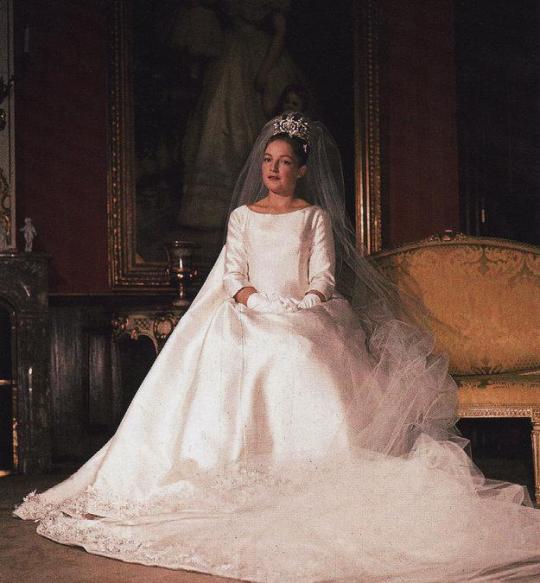
✵ July 18, 1960 ✵
Princess Diane d'Orléans & Carl, Duke of Württemberg
#Diane d'Orléans#Princess Diane#Princess Diane d'Orléans#Diane of Württemberg#Duke of Württemberg#Duchess of Württemberg#Carl of Württemberg#wedding dress#royal wedding dress#tiara#wedding tiara#Diamond Jewelry#Diamond Tiara#royal wedding jewelry#Wedding Jewelry#royal wedding tiara#wedding dress train#royal wedding train#royal wedding dress train#royal wedding veil#beaded wedding dress#House of Württemberg#House of Orléans#german royalty#German royal family#German Royal Wedding#Royal Wedding
12 notes
·
View notes
Photo

Louise Diane d'Orléans - 1731, Noël Nicolas Coypel
#Louise Diane d'Orléans#Noël Nicolas Coypel#House Orléans#xviii century#people#portrait#paintings#art#arte
8 notes
·
View notes